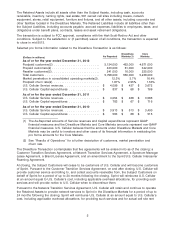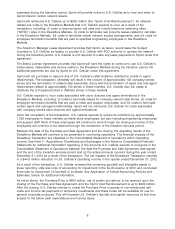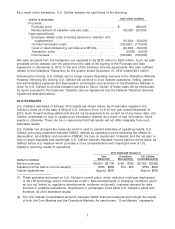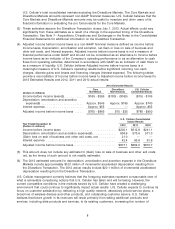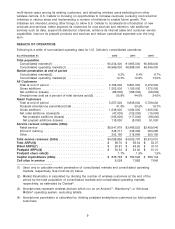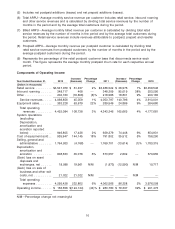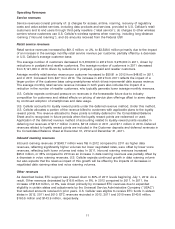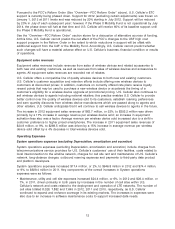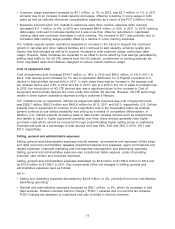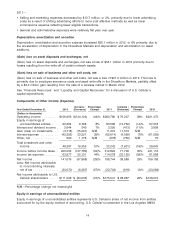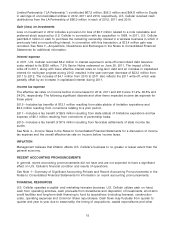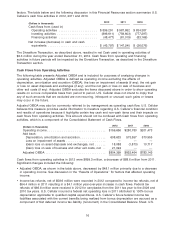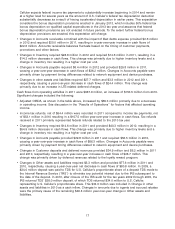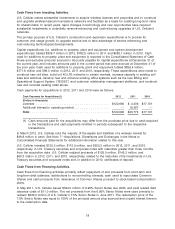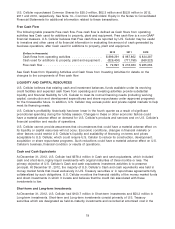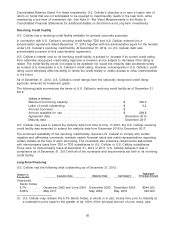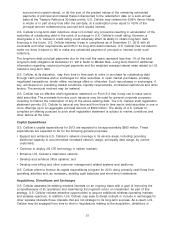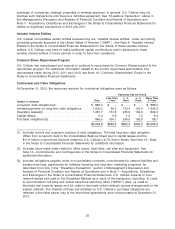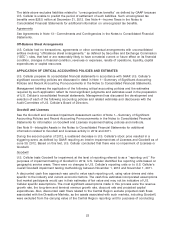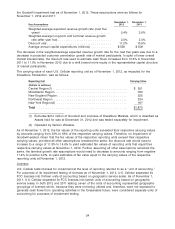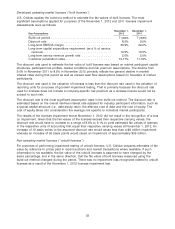US Cellular 2012 Annual Report Download - page 23
Download and view the complete annual report
Please find page 23 of the 2012 US Cellular annual report below. You can navigate through the pages in the report by either clicking on the pages listed below, or by using the keyword search tool below to find specific information within the annual report.Limited Partnership (‘‘LA Partnership’’) contributed $67.2 million, $55.3 million and $64.8 million to Equity
in earnings of unconsolidated entities in 2012, 2011 and 2010, respectively. U.S. Cellular received cash
distributions from the LA Partnership of $66.0 million in each of 2012, 2011 and 2010.
Gain (loss) on investments
Loss on investment in 2012 includes a provision for loss of $3.7 million related to a note receivable and
preferred stock acquired by U.S. Cellular in connection with an acquisition in 1998. In 2011, U.S. Cellular
paid $24.6 million in cash to purchase the remaining ownership interest in a wireless business in which it
previously held a noncontrolling interest. In connection with this transaction, a $13.4 million gain was
recorded. See Note 7—Acquisitions, Divestitures and Exchanges in the Notes to Consolidated Financial
Statements for additional information.
Interest expense
In 2011, U.S. Cellular recorded $8.2 million in interest expense to write-off unamortized debt issuance
costs related to its $330 million, 7.5% Senior Notes redeemed on June 20, 2011. The impact of this
write-off in 2011, along with lower effective interest rates on long-term debt and an increase in capitalized
interest for multi-year projects during 2012, resulted in the year-over-year decrease of $23.2 million from
2011 to 2012. The increase of $4.1 million from 2010 to 2011 also reflects the 2011 write-off, which was
partially offset by an increase in capitalized interest during 2011.
Income tax expense
The effective tax rates on Income before income taxes for 2012, 2011 and 2010 were 31.2%, 36.5% and
34.0%, respectively. The following significant discrete and other items impacted income tax expense for
these years:
2012—Includes tax benefits of $12.1 million resulting from state statute of limitation expirations and
$5.3 million resulting from corrections relating to a prior period.
2011—Includes a tax benefit of $9.9 million resulting from state statute of limitations expirations and tax
expense of $6.1 million resulting from corrections of partnership basis.
2010—Includes a tax benefit of $7.9 million resulting from favorable settlements of state income tax
audits.
See Note 4—Income Taxes in the Notes to Consolidated Financial Statements for a discussion of income
tax expense and the overall effective tax rate on Income before income taxes.
INFLATION
Management believes that inflation affects U.S. Cellular’s business to no greater or lesser extent than the
general economy.
RECENT ACCOUNTING PRONOUNCEMENTS
In general, recent accounting pronouncements did not have and are not expected to have a significant
effect on U.S. Cellular’s financial condition and results of operations.
See Note 1—Summary of Significant Accounting Policies and Recent Accounting Pronouncements in the
Notes to Consolidated Financial Statements for information on recent accounting pronouncements.
FINANCIAL RESOURCES
U.S. Cellular operates a capital- and marketing-intensive business. U.S. Cellular utilizes cash on hand,
cash from operating activities, cash proceeds from divestitures and disposition of investments, short-term
credit facilities and long-term debt financing to fund its acquisitions (including licenses), construction
costs, operating expenses and Common Share repurchases. Cash flows may fluctuate from quarter to
quarter and year to year due to seasonality, the timing of acquisitions, capital expenditures and other
15


